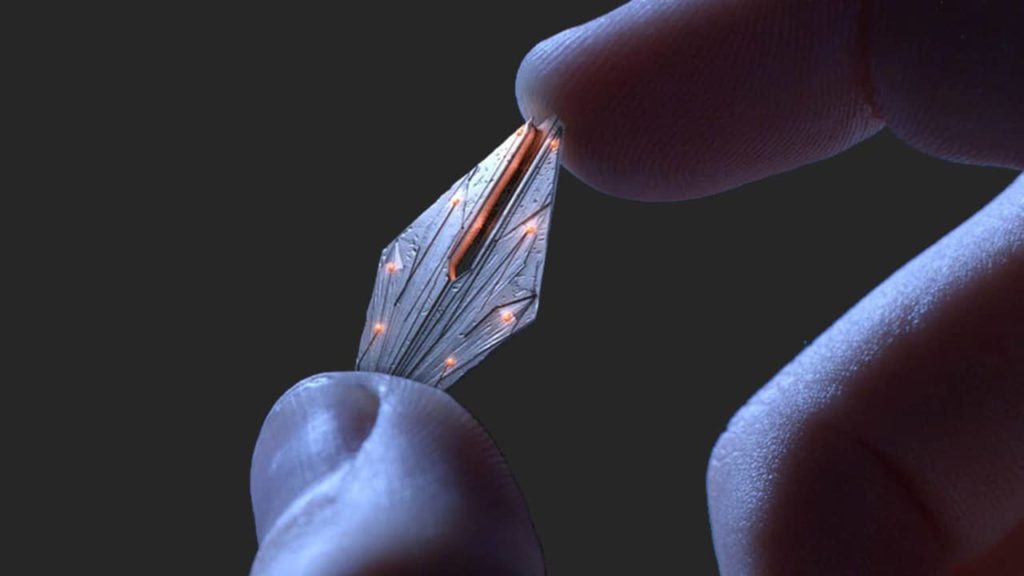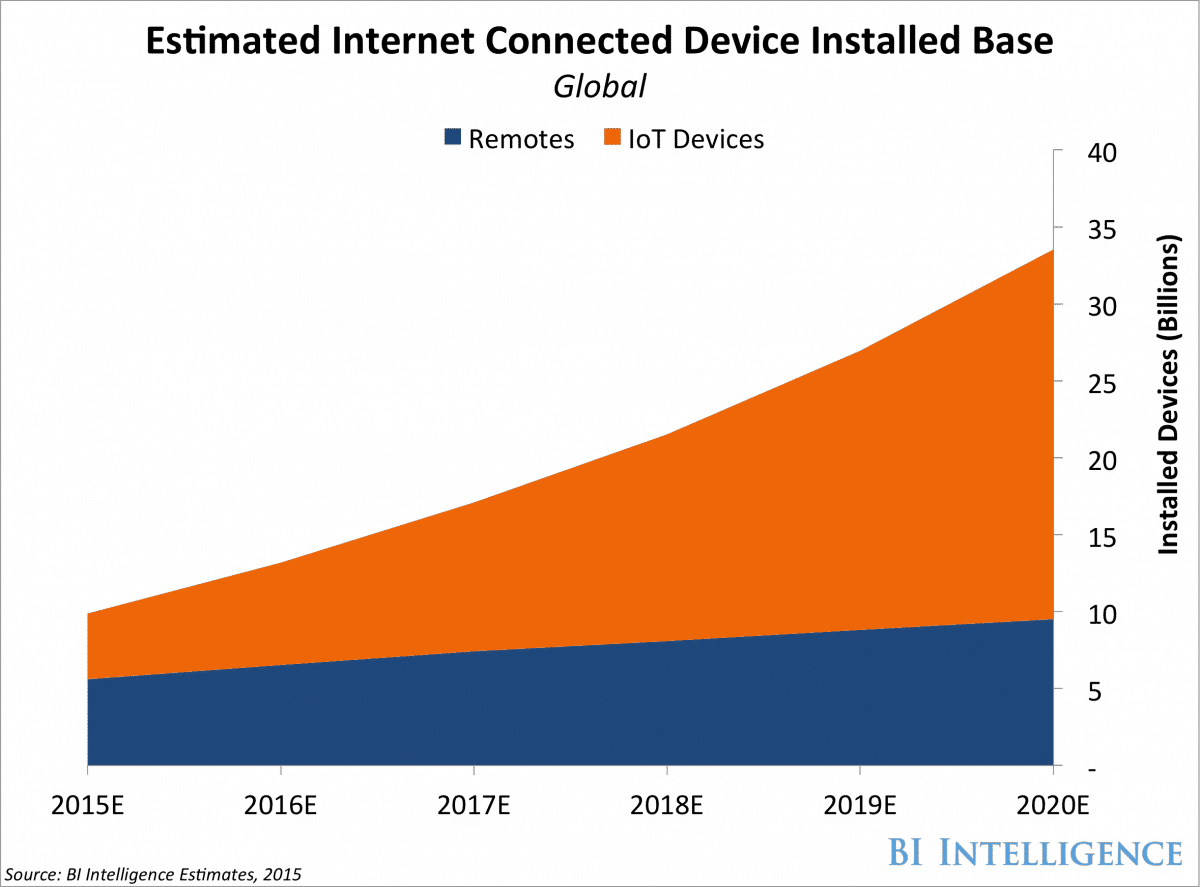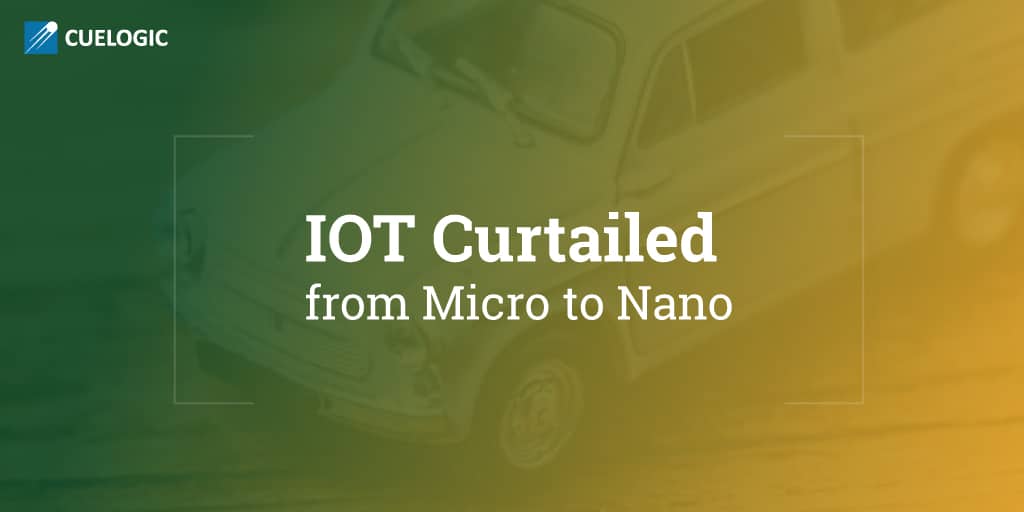“The Internet will disappear. There will be so many IP addresses, so many devices, sensors, things that you are wearing, things that you are interacting with, that you won’t even sense it. It will be part of your presence all the time. Imagine you walk into a room, and the room is dynamic. And with your permission and all of that, you are interacting with the things going on in the room.” — Eric Schmidt
The hypothesis of the Google chairman ( Eric Schmidt) can be seen turning true, as new IOT devices are announced daily and analysts expected up to 30 billion of them to be online by 2020. Let’s go through some stats supporting the hypothesis:

Approximately 65% of enterprises utilize IOT for business purposes, according to a recent survey conducted by 451 Research and cited by Beta News.
Among the businesses surveyed that are using IOT solutions:
- 66% used IOT technologies for risk reduction. For instance, oil companies are starting to use drones to inspect oil rigs, which can be a dangerous task for humans to perform.
- 63% used IOT solutions to optimize operations. For example, manufacturers can use sensors to gather data about machines on their assembly line to predict when they might fail, and fix them prior to experiencing any downtime.
- 33% used IoT App Development to enhance existing products, such as car companies that are putting cellular data connections into their cars to gather data about them and provide Wi-Fi hotspots for passengers.
- 21% leveraged IOT solutions to enhance customer targeting. A good example of this would be a retailer that uses in-store beacons to target customers with real-time offers sent to their smartphone based on their location in the store.

The prime reason behind its explosion is understood to be inexpensive microsensors and microprocessors paired with tiny power supplies antennas. And henceforth, the number of IOT connected devices is going to increase, as scientists have started shrinking sensors from millimeters or microns in size to the nanometer scale, small enough to circulate within living bodies and to mix directly into construction materials.
This is a crucial first step toward an Internet of Nano Things (IoNT) that could take medicine, energy efficiency and many other sectors to a whole new dimension.
After serving Big Data with DNA, now synthetic biology is keen on helping IOT through development of advanced nanosensors through single- celled organisms, such as bacteria. The purpose behind this is to design simple biocomputers that use DNA and proteins to recognize specific chemical targets, store a few bits of information, and then report their status by changing color or emitting some other easily detectable signal.
Synlogic, a startup in Cambridge, Mass., is working to commercialize computationally enabled strains of probiotic bacteria to treat rare metabolic disorders. Beyond medicine, such cellular nanosensors could find many uses in agriculture and drug manufacturing.
If not biological, materials such as carbon nanotubes, that can both sense and signal, is used to build nanosensors, acting as nanoantennas. Their small size gives them the flexibility to fit in anywhere and collect loads of information from millions of different points.
External devices can then integrate the data to generate incredibly detailed maps showing the slightest changes in light, vibration, electrical currents, magnetic fields, chemical concentrations and other environmental conditions.
Some Real Life Examples of Nanotechnologies Driving Future of IOT:
1. Nanotubes
Carbon nanotubes are a nanotechnology constructed with a length-to-diameter ratio of up to 132,000,000:1, used in portable electronics to help fighting against cancer and creating artificial muscles.
2. Stretchable electronics
Researchers from the University of Cambridge have developed what they call “stretchable gold”, a nanotechnology that can bend and allow for multiple IoT applications not only in the mobile phone space, but also in the retail and healthcare sectors.
3. Bleeding plastic
Scientists have developed a bleeding plastic with self-healing capabilities that could put an end to nearly everything getting broken, including cars, airplanes or everyday devices.
Professor and director at the University of Southern Mississippi Marek W. Urban, “Our new plastic tries to mimic nature, issuing a red signal when damaged and then renewing itself when exposed to visible light, temperature or pH changes.”
4. Nano-nodes
Nano-nodes are nanomachines with the capability to perform simple computation, but could be used in the future to make nearly every object and person connected to the internet.
5. Nanoantennas
Nanoantennas are a new emerging technology that could help power wearables, smarten up buildings or keep lights on.
In 2008, researchers at the US Department of Energy’s Idaho National Laboratory developed flexible nanoantenna arrays that have the ability to absorb solar energy. Researchers explained that future applications of the technology could include powering up hybrid cars to any other everyday devices with a better efficiency rate than traditional solar cells.
Conclusion
“Nano” is certainly going to bring a big change as it has the capacity to penetrate almost any type of physical system, biological or other. It may turn impossible to possible through absolute integration between the IT and the physical world.
As Garcia-Martinez points out, “nanosensors are so small that they collect information from millions of points, enabling external devices to generate extremely detailed maps showing minute changes in the properties of the object under observation (e.g. magnetic field, vibrations, electrical currents, etc.).”
